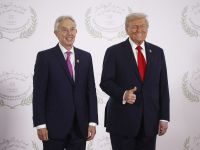Alkhabeer Capital, an asset management and investment firm based in Saudi Arabia, has published its latest report on GCC budget analysis and government spending behaviors in the region focusing on the four leading economies of the region; namely, Saudi Arabia, UAE, Qatar and Kuwait.
Of the GCC countries, Saudi and Kuwait are the most dependent on oil revenues
The annual budget spending in GCC countries still continues to be driven almost entirely by income from the export of hydrocarbons, although the contribution of non-hydrocarbon GDP to the overall GDP has significantly increased over the past two decades across the region.
Since the global financial crisis, the GCC economies have consistently outperformed their global peers, growing by about 24% during the last 5 year period until 2013, supported by robust oil revenues – which the GCC countries are highly dependent on.
Hydrocarbon revenues in Qatar and UAE account for close to 60% of the total revenues of the countries, however in Saudi Arabia and Kuwait, the figure is close to 90% and 93%, respectively. This is in contrast to other resource rich economies such as Norway, where revenues from oil account for just about 30% of government revenues.
The low contribution of the non-hydrocarbon sector primarily reflects the policy decision of maintaining a low or zero-tax environment to assist private sector activity. Although there has been speculation of introduction of GCC-wide value added tax, we do not expect such a decision in the foreseeable future.
Dubai is exemplary in economic diversification; other GCC countries encouraged to follow this example
The UAE, specifically Dubai, has been exemplary in diversifying revenue streams and building on its non-oil growth, which is projected by the IMF to expand by over 4% annually over the next few years. With its recent rights for the World Expo 2020, Dubai will be able to transform itself into a hub for retail and wholesale trade and tourism. Abu Dhabi has the highest hydrocarbon reserves and generates more than half of the GDP in the UAE. The government envisages cutting the capital’s reliance on oil to 36% of GDP by 2030 under Abu Dhabi’s Economic 2030 Vision. As part of this strategy, Abu Dhabi has increased investments to develop sectors such as petrochemicals, financial services, aviation, renewable energy, and cultural tourism.
Comparing budgetary revenue trends, it is clear that the contribution of non-oil public revenue in Saudi and Kuwait is far lower that it is in Qatar and UAE. In terms of overall revenues, Qatar has registered a double digit growth of 19% annually over the last five years, far ahead of others, reflecting a strong rise in both hydrocarbon and non-hydrocarbon sectors.
Qatar has also outpaced other GCC countries in terms of non-hydrocarbon sector revenue growth, posting an 18% CAGR over the last five years. A major part of the non-hydrocarbon revenue comes from investment income, which consists of transfer of profits from public enterprises (including Qatar Petroleum’s subsidiaries), and accounted for around 16.9% of the GDP and almost 44% of total revenues in FY 2013-14. The government’s long-term objective is to finance its entire budgetary operations through non-hydrocarbon revenue by 2020 and has allocated significant capital towards development of infrastructure, health and education.
Governments are increasingly allocating budgets for education and healthcare
Although spending growth has slowed for the current fiscal year across the GCC, budgeted spending for 2014 is at record highs, reflecting that government spending will continue to rise, despite signs of plateauing oil revenues. A large part of the spending continues to be allocated towards the social sectors, mainly education, healthcare, infrastructure and housing. Across the GCC, with growing youth population, local unemployment, rising housing rentals and food inflation pressures, addressing the social challenges forms a key priority for the regional governments. In 2014, Saudi Arabia, has allocated 25% of its budgetary expenditure towards education and human resource development, while 21% of UAE’s federal budget was allocated for education. Qatar has doubled its educational spending in the last five years. Likewise healthcare is also a key focus area and is expected to continue to see spending increases.
However, the majority of government expenditure is geared towards current expenditure versus capital expenditure or investments. A significant portion of the current expenditure is allocated to meet the rising outflow of salaries and wages in the public sector, and other forms of entitlements.
Capital expenditures will have sustainable long-term impacts
Alkhabeer observes that weakness in capital spending could directly impact long term economic growth. Qatar and Saudi Arabia have been on the forefront of capital expenditures compared to their GCC peers in the past few years. Qatar plans to spend close to 40% of its budgeted expenses in key infrastructure initiatives and has been ramping up infrastructure spending ahead of FIFA 2022. Capital expenditure growth in the Kingdom has outpaced growth in current expenditure since 2009 and considerable allocation of funds will be required to support upcoming infrastructure initiatives. A recent report has indicated a total of $2.5 trillion spending on mega projects underway in the MENA region, with the GCC region accounting for 87% of the total project volume.
Meanwhile, in the UAE and Kuwait growth in capital expenditure has been slower than the rise in current expenditure in the recent years. Budgeted capital expenditure in Kuwait, for the 2015 fiscal accounted for about 9% of the overall expenditure.
A Reality Check
The report shows that the overall fiscal position of the GCC remains stable but there are several key steps that need to be taken to lower dependence on oil revenues, and mitigate long term risks that may arise as a result.
With the IMF projecting dramatic change in the fiscal environment by the end of the decade, a close watch must be kept on the fiscal policy stance of the region’s governments, which must be ccognizant of the prospect of lower hydrocarbon revenues. A well poised strategy must be put in place to diversify the GCC economies and increase their non-oil revenues to mitigate long term challenges. Another pressing issue that must not be ignored is the subsidy bills for Gulf governments, with energy subsidy costs in some of the GCC countries as high as 28% of government revenues.








